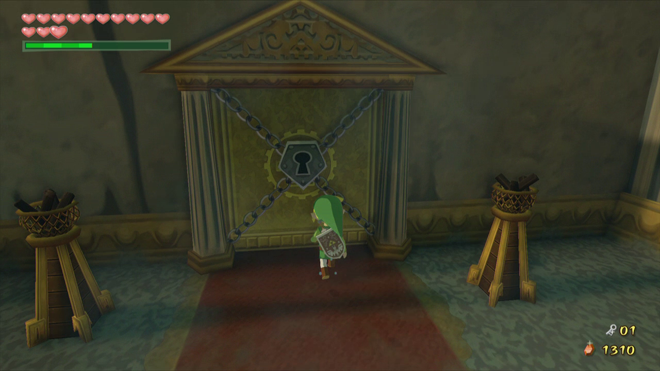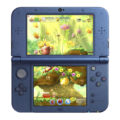Cognition Dissemination: Nintendo’s Unique Strategy for Switch

It was tough not to be excited for Nintendo Switch after the unveil a week ago, particularly if you’re a fan of the company’s products and software. Unlike Wii U, where Nintendo had multiple chances to sell a large audience on their system and faltered multiple times (two of which were live shows at E3), it was clear they studied their prior errors and made sure to relay precisely what Switch is. Following the introduction video, there was no confusion as to what its main functions are, nor was a voiceover explanation necessary to explain them. It did its job in intriguing the audience as to what Nintendo is planning for the future.
Though I was previously a little pessimistic about the name (despite acknowledging how it’s still better than Wii U), I’ve come around to it. It explains the system’s functions quickly to those who see ads or happen upon it in stores — another key demographic Nintendo should look out for. The “Switching” function can be applied to multiple factors, like switching the game from its screen to the TV or swapping control methods, which is quite ingenuous.

But if you’re among those eagerly awaiting the full reveal, since last week’s video was an appetizer, you’re in for a hell of a wait. Nintendo confirmed yesterday that the curtain won’t be pulled back completely until January 12, 2017, a whopping 76 days from now. This event will answer most outstanding questions regarding the system, with plans to announce the price, show more software, and confirm a launch date. The March release timeframe was reaffirmed during their recent investor briefing, alongside their intent to ship two million systems worldwide off the bat. The largest info is being saved for this.
What’s remarkable is how this will be the shortest full unveil-to-release period for a Nintendo system in a while, as we knew far more about previous consoles prior to their launches. I’ve seen plenty who aren’t fans of this, particularly those who enjoy getting hyped well before console launches, and they’re drawing unflattering conclusions.
This strategy is also part of Nintendo’s learning process, after looking at issues which plagued the aforementioned hardware reveals. The 3DS had an excellent debut at E3 2010, followed with a dreary period where little-to-no software of note was unveiled, outside the slew Level 5 announced at their Vision event that year. The $250 price announcement put an even larger damper on the enthusiasm, which carried into the launch period. There was a good reason why they had to reduce its price by $80 less than half a year after its launch.
Though I previously went over how the Wii U’s pre-launch showcases were flubbed, another striking issue was how little software was presented in each of them. Perhaps the best showcase was one held in New York City around two months before the system’s launch, where a good amount of software was promoted well — including Bayonetta 2. It’s no surprise that this upcoming Switch event will have more in common with that one. It could be similar to the Nintendo Direct where nearly the entire upcoming Wii U software lineup was revealed in January 2013.
However, the gaming audience enjoys hype cycles, especially for new hardware. So for purposes of their excitement, perhaps there’s a chance this strategy could backfire. Some of them have already concluded that they’re refraining from showing much because they don’t have enough software to show — especially from third-party publishers. While having The Elder Scrolls V: Skyrim — Special Edition and NBA 2K17 on the system is nice, prospective players won’t be sold by ports of titles they could get on other platforms. Sony and Microsoft made sure to share a bunch of key info and software for PlayStation 4 and Xbox One months before their systems launched, and while part of the Switch’s more conservative promotional period is due to Nintendo adhering to tradition, it nonetheless makes some questions worth asking.

However, it appears nothing is stopping companies from making vague announcements. Third-party games like Project Sonic 2017 and, just today, a Nobunaga’s Ambition title were confirmed for the system, but both are as light on info as the announcements of Dragon Quest X and especially XI for the system. It’s likely Nintendo is asking some of them to hold off their concrete announcements until this special event. If not, they have a serious problem on their hands.
It’s not just third-parties that will rely on ports, especially early in the system’s life. Reliable rumors say those Mario Kart and Splatoon games shown in the video are enhanced ports of the Wii U games, and the same sources suggest Super Smash Bros. 4 is also making is way to Switch. This makes sense, as it will mark more opportunities for Nintendo to sell games originally released on a system people didn’t purchase in large enough numbers. Besides, it’s not as if ports are uncommon for a console’s first year, as a bunch of games released on PS4 and XB1 early in its life could also be acquired on last-generation systems — albeit with reduced performance. But it will be nice if some surprises are also thrown in, and I’m sure one of them is that new 3D Mario game.
Nintendo loves to take alternate approaches compared to other hardware manufacturers in the gaming business, whether they work out or not. While gaming enthusiasts will be a little upset about the short hype cycle, this won’t be necessary for the wider audience. It’s the latter that will be key to selling this system, so hopefully Nintendo can appeal to them — especially for the sake of their company as a hardware manufacturer. They could use a successful HD system.






Can’t play it yet, so why bother caring about the details? We all have a rough idea of the cost, and if the expectations are not to one’s liking, then they’ll just have a pile of money originally being saved to purchase the Switch to now blow on other dumb shit. It’ll be like a second Christmas for themselves. As for ports, even the library of the original NES was mostly recreations of arcade games for a long time, and the launch of arcades was just a bunch of ports of outdoor activities, like tennis and basketball, and the launch of sports was just altered ports of running around, throwing rocks, and clubbing things for survival, and the launch of survival consisted of porting kicks to the womb by an unborn infant who was just fussy about being unable to complete the second stage of Ghosts ‘n Goblins. The launch of the Nintendo Switch is just a small part of the grand cycle of life (also known as the “console life cycle”).
Speculation is often enjoyable to engage in, and for others to read, particularly when it involves Nintendo.
Also: NES ports and modern-day ports are a very, very different ballgame. But that topic is worth a post in itself.